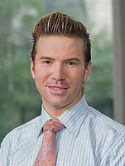Nonphysician practice of cosmetic dermatology: A patient and physician perspective of outcomes and adverse events Journal Article
| Authors: | Rossi, A. M.; Wilson, B.; Hibler, B. P.; Drake, L. A. |
| Article Title: | Nonphysician practice of cosmetic dermatology: A patient and physician perspective of outcomes and adverse events |
| Abstract: | BACKGROUND: Nonphysicians are expanding practice into specialty medicine. There are limited studies on patient and physician perspectives as well as safety outcomes regarding the nonphysician practice of cosmetic procedures. OBJECTIVE: To identify the patient (consumer) and physician perspective on preferences, adverse events, and outcomes following cosmetic dermatology procedures performed by physicians and nonphysicians. MATERIALS AND METHODS: Internet-based surveys were administered to consumers of cosmetic procedures and physician members of the American Society for Dermatologic Surgery. Descriptive statistics and graphical methods were used to assess responses. Comparisons between groups were based on contingency chi-square analyses and Fisher exact tests. RESULTS: Two thousand one hundred sixteen commenced the patient survey with 401 having had a cosmetic procedure performed. Fifty adverse events were reported. A higher number of burns and discoloration occurred in the nonphysician-treated group and took place more often in a spa setting. Individuals seeing nonphysicians cited motivating factors such as level of licensure (type) of nonphysician, a referral from a friend, price, and the location of the practitioner. Improper technique by the nonphysician was cited most as a reason for the adverse event. Both groups agree that more regulation should be placed on who can perform cosmetic procedures. Recall bias associated with survey data. CONCLUSION: Patients treated by nonphysicians experienced more burns and discoloration compared with physicians, and they are encountering these nonphysicians outside a traditional medical office, which are important from a patient safety and regulatory standpoint. Motivating factors for patients seeking cosmetic procedures may also factor into the choice of provider. KEY POINTS: Both patients and physicians think more regulation should be in place on who can perform cosmetic procedures. More adverse events such as burns and discolorations occurred with patients seeing nonphysicians compared with those seeing physicians. In addition, for those seeing nonphysicians, a majority of these encounters took place in spa settings. Patient safety is of utmost concern when it comes to elective cosmetic medical procedures. More adverse events and encounters occurring outside traditional medical settings when nonphysicians performed these procedures call into question the required training and oversight needed for such procedures. |
| Journal Title: | Dermatologic Surgery |
| Volume: | 45 |
| Issue: | 4 |
| ISSN: | 1076-0512 |
| Publisher: | Lippincott Williams & Wilkins |
| Date Published: | 2019-04-01 |
| Start Page: | 588 |
| End Page: | 597 |
| Language: | English |
| DOI: | 10.1097/dss.0000000000001829 |
| PUBMED: | 30946699 |
| PROVIDER: | scopus |
| PMCID: | PMC6450566 |
| DOI/URL: | |
| Notes: | Article -- Export Date: 1 May 2019 -- Source: Scopus |
Altmetric
Citation Impact
BMJ Impact Analytics
Related MSK Work






